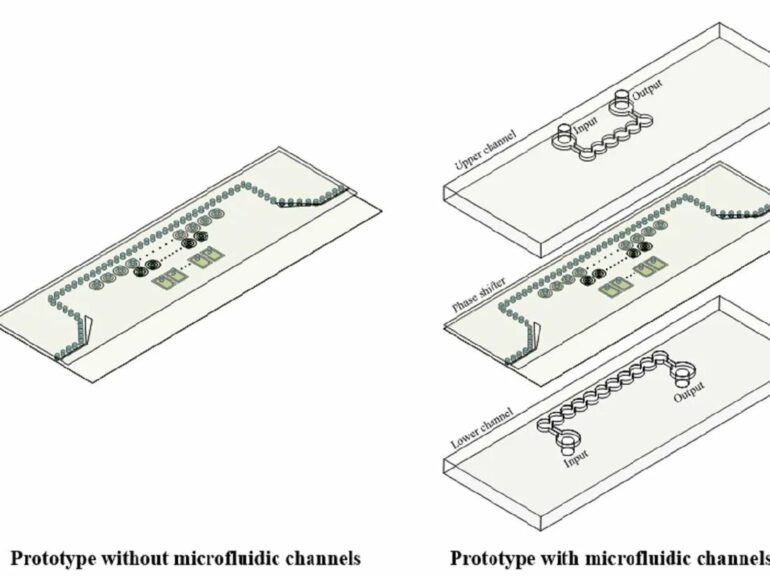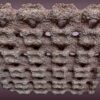A new type of high performance “phase shifter” for use in advanced phase array antenna systems has been developed at the University of Birmingham. Researchers led by Dr. Yi Wang from Birmingham’s School of Engineering created a new type of high-performance “phase shifter” using a liquid Gallium alloy, which varies the phase angle of microwave and millimeter-wave radio signals.
The phase shifter is a key enabling technology for advanced phased array antennas (PAA) which are widely used in mobile base stations, satellites and radar systems. These PAA systems use multiple phase shifters to provide the controlled phase increments that steer the radiation beam. However current phase shifters typically use semiconductors and suffer from high loss of signal (insertion losses) and relatively poor power handling capability.
Dr. Wang said, “An ideal phase shifter would provide a stable, and wide phase angle range with a minimal loss of signal over the operation bandwidth. However conventional phase shifters suffer from signal losses which increase as the phase angle increases, and the phase varies with frequency. Taken together, these issues can cause signal degradation and impair performance. Rectifying this requires additional complicated circuitry and consumes more power, which adds to both the bulk and the running cost of the entire antenna.”
The research team set out to overcome these long-standing issues by designing a new type of phase shifter that controls the phase shift via a liquid-metal material that runs in microfluidic channels.
The results of prototype testing are published in IEEE Transactions on Microwave Theory and Techniques and show that, the new phase shifter shows low signal losses that are almost independent of phase angle.
In addition, while most conventional phase shifters provide different phase delay at different frequencies (dispersion), which limits their usable bandwidth and applicability, the new phase shifter has a “phase compensation” technique that provides extremely low phase deviation with frequency over a wide bandwidth.
University of Birmingham Enterprise has filed a patent application covering the microfluidic channel wave-guiding device, and the research team, which has extensive experience of working with industry, is now seeking to license the novel technology for development and commercialization and is doing further research to expand this protection.
Dr. Wang added, “The new phase shifter does not need cleanroom facilities for fabrication, so is inexpensive to manufacture. The liquid-metal enabled phase shifting elements have a ‘passive’ nature, unlike the ‘active’ semiconductor-based counterparts, which potentially offers high power-handling capability. Apart from the signature application in phased array antennas, the phase shifters may find a wide range of usages from communications and radars to instruments.”
More information:
Yi-Wen Wu et al, Liquid Metal-Based Tunable Linear Phase Shifters With Low Insertion Loss, High Phase Resolution, and Low Dispersion, IEEE Transactions on Microwave Theory and Techniques (2023). DOI: 10.1109/TMTT.2023.3248954
Provided by
University of Birmingham
Citation:
New ‘phase shifter’ technology can reduce signal loss in antenna systems (2023, March 6)



